Text
The Ultimate Guide to Golden Retrievers: Everything You Need to Know!
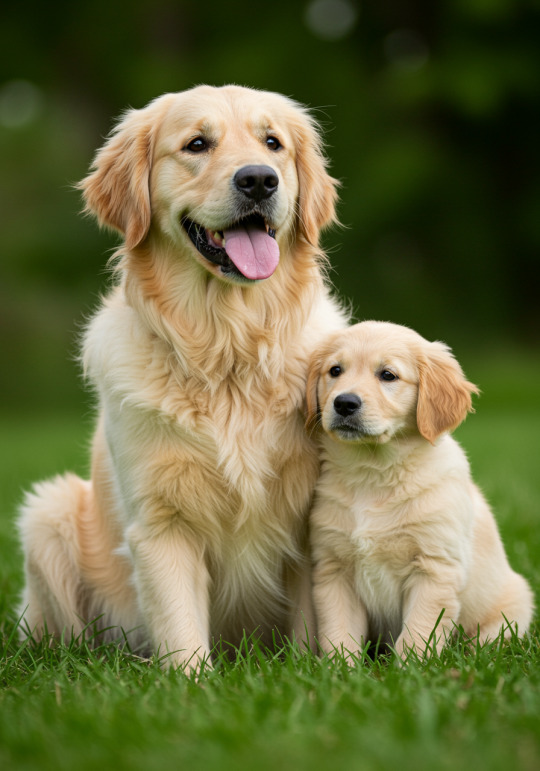
So, you’re thinking about getting a Golden Retriever? Or maybe you already have one and just want to learn more about this lovable, floppy-eared goofball. Either way, you’ve come to the right place! Goldens are one of the most popular dog breeds in the world—and for good reason. Let’s dive into everything you need to know before bringing one into your life.
Breed Size & Weight
Golden Retrievers are a medium-to-large breed.
Males typically weigh between 65-75 lbs and stand 23-24 inches tall at the shoulder.
Females are a bit smaller, weighing 55-65 lbs and standing 21.5-22.5 inches tall.
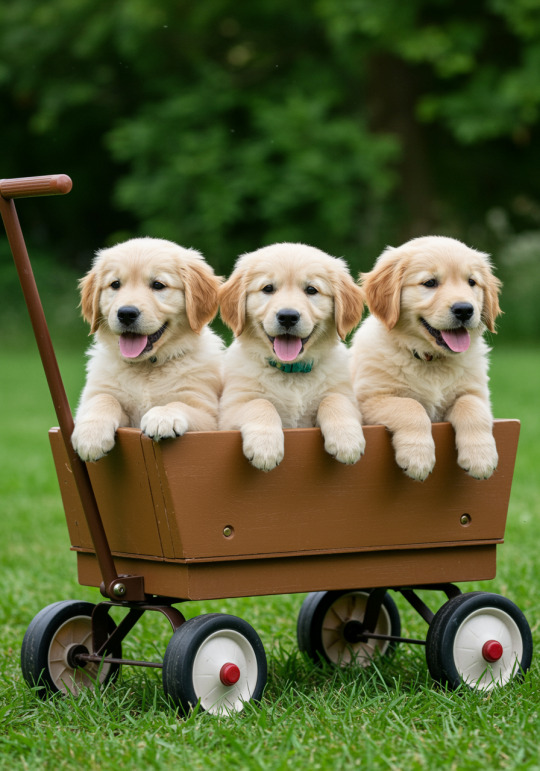
Lifespan
Golden Retrievers have an average lifespan of 10-12 years. Some may live longer with excellent care, a proper diet, and regular exercise.
Coat & Color Variations
Goldens have a double coat, meaning they have a thick, water-resistant outer coat and a soft undercoat. Their fur is medium to long in length and can be:
Light golden
Standard golden
Dark golden
They also have feathering on their legs, chest, and tail, which gives them that signature fluffy look!

Personality
If you’re looking for a friendly, affectionate, and social dog, Goldens are one of the best! They are:
Extremely loyal and people-oriented
Gentle and loving with families
Playful and energetic
Known for their enthusiastic, happy demeanor (a Golden smile is a real thing!)

Training
Golden Retrievers are highly intelligent and eager to please, making them easy to train. They excel in obedience, agility, and even service work. Start training early and use positive reinforcement (treats, praise, playtime) for best results.
Are They Good Guard Dogs?
Not really. Goldens are too friendly to be effective guard dogs. While they may bark to alert you, they are more likely to lick an intruder than scare them away!

Are They Good with Kids?
Absolutely! Goldens are one of the best family dogs you can get. They are patient, gentle, and playful, making them perfect for households with children.

Nutrition
Goldens thrive on high-quality dog food that contains lean proteins, healthy fats, and essential nutrients. Watch their portion sizes, as they are prone to weight gain.
Foods to include:
Lean meats (chicken, beef, fish)
Vegetables (carrots, spinach, sweet potatoes)
Healthy fats (salmon oil, flaxseed)
Foods to avoid:
Chocolate, grapes, onions, and anything toxic to dogs
Excessive carbs or fillers

Exercise Requirements
Goldens are high-energy dogs that require at least 1-2 hours of exercise per day. Without proper exercise, they can become bored and destructive. Activities they love include:
Fetch
Swimming
Hiking
Running
Agility training

Common Health Problems
Like all breeds, Goldens have some common health concerns, including:
Hip & elbow dysplasia (joint problems)
Cancer (unfortunately common in the breed)
Ear infections (due to their floppy ears trapping moisture)
Obesity (if diet & exercise aren’t managed properly)
Regular vet checkups can help catch any issues early!

Do They Bark a Lot?
Goldens aren’t excessive barkers, but they will bark to alert you or when they’re excited. With proper training, barking can be managed.
Grooming
Golden Retrievers require regular grooming to keep their coats healthy and prevent matting.
Brush them 2-3 times a week (daily during shedding season!)
Bathe them once a month or as needed
Trim their nails regularly
Check their ears weekly for signs of infection

Shedding
Yes, Goldens shed a lot! They blow their coats twice a year (spring and fall), but you can expect shedding year-round. Regular brushing helps manage the fur explosion.
Space Requirements: Are They Apartment Dogs?
Goldens can adapt to apartment living, but they thrive best in homes with a yard. If you live in an apartment, be prepared to take them out for frequent exercise and mental stimulation.

Do They Drool?
Not as much as some breeds, but Goldens can drool, especially after drinking water or when waiting for food.
Litter Size
Golden Retriever litters typically range from 6-10 puppies per litter.

Are They Smart?
Yes! Goldens are ranked among the top 5 smartest dog breeds. They learn commands quickly and excel in obedience training.
Temperament
Golden Retrievers are gentle, affectionate, playful, and social. They are rarely aggressive and are known for their trusting, happy-go-lucky nature.

Pros & Cons of Owning a Golden Retriever
Pros: ��� Loving and loyal ✅ Great with kids and families ✅ Highly trainable and intelligent ✅ Adaptable to various lifestyles ✅ Fun, playful, and energetic
Cons: ❌ Heavy shedders (get ready for fur everywhere!) ❌ Require lots of exercise and mental stimulation ❌ Prone to health issues like hip dysplasia and cancer ❌ Not great guard dogs (too friendly!)

Final Thoughts
Golden Retrievers are one of the best dog breeds out there—loving, intelligent, and full of life. However, they do require commitment, exercise, and lots of love. If you’re ready for the responsibility, a Golden will reward you with years of joy, companionship, and unconditional love. 💛
Thinking about getting a Golden Retriever? Already have one? Let me know in the comments! 🐶
#GoldenRetriever#GoldenRetrievers#DogLovers#PuppyLove#GoldenLife#DogsOfTumblr#DogBreeds#DogTraining#DogCare#FluffyDog#RetrieverLife#GoldenRetrieverPuppy#PetCare#DogMom#DogDad#FurryFriend#BestFamilyDog#DogLover#DogGrooming#SheddingSeason
1 note
·
View note
Text
Daily Cuteness: Dachshund











5 notes
·
View notes
Text
Daily Cuteness: Siberian Husky

Welcome to your escape into the enchanting world of Siberian huskies! Whether you're captivated by their piercing blue eyes, fluffy coats, or playful personalities, this is your daily dose of husky happiness. Dive in and enjoy the charm of these majestic pups, one picture at a time.













#SiberianHusky#HuskyLove#FluffyDogs#DogsofTumblr#HuskyAdventures#HuskyLife#BlueEyedHusky#MajesticHusky#HuskySmile#PawsAndTails#HuskyObsession#DailyDogPics#HuskyGram#HuskyFans
3 notes
·
View notes
Text
Daily Cuteness: Airedale Terrier










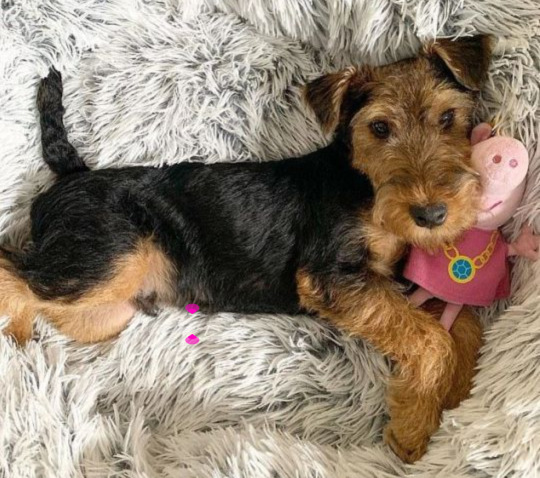





#AiredaleTerrier#DogPhotography#TerrierLife#AiredaleLove#CuteDogs#DogPhotos#KingOfTerriers#AdventureDogs#DogLovers#PetBlog#dailycuteness#puppyexpressions#alwaysdogs
6 notes
·
View notes
Text
Fun Dog Fact: Why Do Dogs Love Sticking Their Heads Out of Car Windows?

Ever wonder why your dog loves sticking its head out of the car window? It’s all about their incredible sense of smell! Dogs have up to 300 million scent receptors (compared to our measly 5 million), and the wind rushing past them is like a scent buffet. They’re catching whiffs of everything—food, plants, other animals—and it’s their version of sightseeing. Just make sure they’re safely secured while enjoying their sniff adventure!
#DogFacts#FunDogFacts#DogsOfTumblr#DogLovers#PuppyLove#DogBehavior#CarRideDogs#FurryFriends#CanineScience#DogSenses#SniffAdventures#DogLife#DogSafety#BigDogEnergy#TumblrDogs
3 notes
·
View notes
Text
Daily Cuteness: Boat Dogs

Ahoy, dog lovers and sea enthusiasts! Welcome as we celebrate the unbreakable bond between dogs and the open water.
















#DogsOnBoats#BoatDogs#SailingDogs#PuppyAdventures#NauticalDogs#DogLife#AdventureDogs#DogsOfTumblr#SeaDogs#BoatLifeWithDogs#DogsAndBoats#CanineCrew#PetLovers#DogBlog#TumblrPets#DogPhotography#NauticalPets
3 notes
·
View notes
Text
Daily Cuteness: Dogue de Bordeaux

Meet the mighty yet lovable Dogue de Bordeaux! This gentle giant is known for its muscular build, deep eyes, and loyal, protective nature. Whether they're lounging lazily or showing off their strength, these dogs never fail to melt your heart with their unique charm. Check out these adorable photos of this amazing breed!












#DogueDeBordeaux#FrenchMastiff#MastiffLove#BigDogEnergy#GentleGiant#DogBreedSpotlight#DroolMasters#PowerfulPups#DogueDeBordeauxLife#FurryFriends#MajesticMastiff#BigDogLovers#DogCommunity#TumblrDogs#PuppyLove
8 notes
·
View notes
Text
Fun Dog Fact: How Your Pup Knows When It’s Time for Dinner

Did you know that dogs have a sense of time? Studies show that dogs can actually pick up on the rhythm of daily routines, so if you always feed them at 6 p.m., they'll start to get excited around that time, even if you’re not around. They don’t just rely on clocks—they use their sense of smell and memory to keep track! So next time your dog starts pacing at the same time every day, don’t be surprised—they’re just eagerly awaiting their next meal or playtime!
#DogFacts#FunDogFacts#DogLovers#DogsOfTumblr#PuppyKnowledge#PetTips#DogBehavior#DogTime#CanineChronicles#DogMom#DogDad#DogCommunity#FurryFriends#PuppyLove
4 notes
·
View notes
Text
Pomsky Guide: Everything You Need to Know About This Adorable Breed

The Pomsky is a hybrid breed, a cross between a Pomeranian and a Siberian Husky, cherished for its stunning looks and affectionate nature. This guide explores every aspect of the Pomsky, from appearance and personality to care and costs.

Appearance and Size
Pomskies inherit features from both parent breeds, creating a strikingly beautiful dog. Their size can vary depending on the dominance of either parent's genes.
Height: Typically 8-15 inches tall at the shoulder.
Weight: Between 5-30 pounds

Pomsky Sizes:
Toy Pomsky: Under 10 inches tall and weighs 5-9 pounds.
Mini Pomsky: Around 10-15 inches tall, weighing 10-20 pounds.
Standard Pomsky: 15 inches or taller, weighing 20-30 pounds or more.

Coat and Color Variations
Their double coat is soft and fluffy, and the coat can be black, white, gray, brown, red, or a mix of these colors. The eyes can be strikingly blue, brown, green, or even bi-colored.

Temperament and Personality
Pomskies are lively, intelligent, and affectionate dogs that form strong bonds with their families. They are known for their playful and sometimes mischievous nature.
Socialization: Early socialization is vital to help them become confident and well-behaved.
Good Family Dog: Yes, they thrive on attention and love being part of family activities.
Good with Children: Generally good, but supervision is recommended with younger children due to their small size.
Good with Strangers: They can be reserved or wary, making socialization important.
Good with Other Pets: Typically good with cats and other dogs if introduced properly.
Guard Dog: Not ideal, as they lack the size and temperament of a traditional guard dog, though they may alert bark.

Living Conditions
Apartment-Friendly: Yes, as long as they receive sufficient exercise.
Exercise Needs: Moderate. Daily walks and playtime are sufficient to keep them happy and healthy.

Grooming and Shedding
Pomskies are moderate to heavy shedders due to their double coat. Regular grooming is essential to keep their coat in top condition. (Do not ever shave a pomsky's hair)
Brushing: Brush 2-3 times a week to manage shedding and prevent matting.
Bathing: Once a month or as needed.
Nail Care: Trim nails every 3-4 weeks.
Dental Care: Regular brushing to maintain oral health.
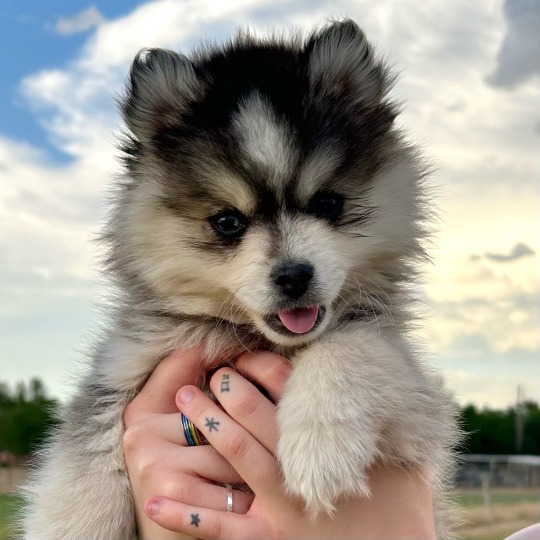
Health and Lifespan
Pomskies are generally healthy but can inherit health issues from their parent breeds.
Lifespan: 12-15 years.
Common Health Issues:
Hip dysplasia
Eye conditions (e.g., cataracts)
Dental issues
Allergies
Collapsing trachea
Regular vet checkups and a healthy diet are crucial for preventing and managing these conditions.

Feeding and Nutrition
Diet: High-quality dog food tailored to their size, age, and activity level.
Feeding Schedule: 2-3 meals per day.
Avoid Overfeeding: Pomskies are prone to obesity if overfed or under-exercised.

Barking
Pomskies are known to be vocal, often inheriting the talkative nature of their Husky parent. Training can help manage excessive barking.
Training
Pomskies are intelligent and eager to learn but may also inherit a stubborn streak.
Methods: Positive reinforcement works best. Food oriented.
Socialization: Start early with exposure to various people, pets, and environments.
Commands: Focus on basic obedience and behavioral training to curb undesirable habits like barking or chewing.

Breeding and Puppies
Litter Size: Typically 4-6 puppies per litter.
Breeding Considerations: Responsible breeding practices are essential to ensure healthy puppies. Consult with a vet for advice on genetic testing and care for the mother.

Costs
Initial Purchase Price: $1,000-$5,000, depending on the breeder and lineage.
Monthly Costs: $100-$200 for food, grooming, and healthcare.
Additional Expenses: Training, toys, and emergency vet bills.

Final Thoughts
Pomskies are delightful companions, combining the charm of the Pomeranian and the energy of the Husky. With proper care, training, and love, they make excellent family pets. However, prospective owners should consider their grooming needs, energy levels, and costs before bringing one home.
If you’re ready to welcome a Pomsky into your life, you’ll find a loyal and affectionate friend in this unique hybrid breed.








#Pomsky#PomskyLife#PomskyLovers#DogBreeds#CuteDogs#HybridDogs#PomskyCare#DogGrooming#PomskyTraining#PetLovers#PomskyPuppy#DoubleCoatDogs#ApartmentDogs#DogHealth#FluffyDogs#DogOwners
5 notes
·
View notes
Text
The Secret Weapon Every Pet Parent Needs: Resolve Ultra Pet Spray 🐾

Hey, fellow fur mamas and pet parents! 🐶🐱 If you’ve ever had that heart-sinking moment when your sweet pup or sneaky kitty has an accident on your favorite rug or sofa, you’re not alone. I’ve been there (more times than I’d like to admit). But guess what? I found the holy grail for cleaning up those messes: Resolve Ultra Pet Spray.
This stuff is a lifesaver. I mean, it doesn’t just cover up the smell—it removes it. And those ugly yellow spots? Gone, like magic. Whether it’s your living room rug, the cushions your dog thinks are his throne, or even the chair you swore your cat would never climb on, this spray works wonders.
Here’s my routine: 1️⃣ Blot up as much of the mess as possible (paper towels are your bestie here). 2️⃣ Spray the spot generously with Resolve Ultra Pet Spray. 3️⃣ Let it sit for 5 minutes, then blot again with a clean cloth. 4️⃣ Smile because it’s like the accident never happened.
What I love most? It’s safe for your fur babies and leaves behind a fresh, clean scent. None of that “fake flower trying to cover up pee” smell. Trust me, your house will thank you.
If you’re tired of chasing odors and stains, grab a bottle of Resolve Ultra Pet Spray on Amazon. You’ll thank me later (and so will your couch). 💕
🐾 Share this with a fellow pet parent—you know they need it! 🐾
#PetParentLife#FurMamaApproved#PetAccidentCleanup#DogMomTips#CatMomStruggles#PetCareEssentials#CleanHomeHappyPets#ResolveUltraPetSpray#PetParentHacks#PetOdorSolutions#UpholsteryCleaningTips#RugCleaningTips#PetStainRemoval#DogMomLife#CatMomLife#FurBabyLove#LifeWithPets#PetFriendlyHome#HappyPetsHappyHome#PetParentProblems
2 notes
·
View notes
Text
Daily Cuteness: Beagles

Welcome to a world of floppy ears, soulful eyes, and tails that never stop wagging! This blog is a love letter to the most loyal, curious, and downright adorable companions—beagles. Prepare for heart-melting moments and a reminder of why dogs truly are our best friends.













Thanks for wagging along with us on this beagle-filled adventure! 🐾 Before you go, check out these adorable beagle-themed shirts I sniffed out on Amazon—they're paws-itively perfect for any beagle lover! Whether you're looking to wear your love for these floppy-eared cuties or gift a fellow dog enthusiast, these shirts will make your tail wag. 🐶💖 Click below and fetch your favorite now!
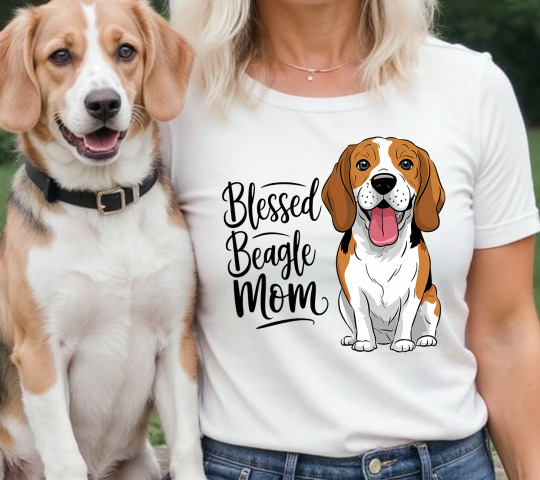
Blessed Beagle Mom is available on Amazon
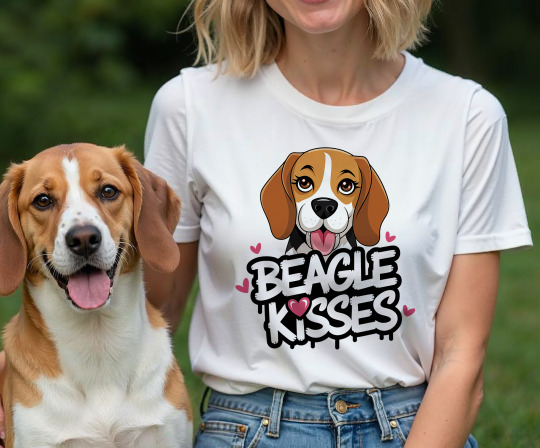
Beagle Kisses is Available on Amazon
#cutebeagles#funnybeagles#BeagleLove#BeagleLife#BeagleAdventures#BeagleDogs#BeaglePuppies#DogLovers#FloppyEars#DogsofTumblr#BeagleObsessed#AdorableBeagles#BeaglePhotos#DogMomLife#BeagleAppreciation#PuppyCuteness#DogsAreFamily#BeagleFans#BeagleCommunity#BeaglePictures#CuteDoggos#BeagleForever#dailycuteness#beaglelovers#beaglemom#beagledad
4 notes
·
View notes
Text
10 Quirky Dog Behaviors and What They Really Mean

Dogs are endlessly fascinating creatures. They’re our loyal companions, cuddle buddies, and sometimes, personal comedians. But let’s face it—our furry friends have a way of doing things that leave us scratching our heads. Why do they tilt their heads like they’re trying to understand us? What’s with the obsession with tail-chasing?
If you’ve ever wondered about the quirks that make dogs so uniquely lovable, you’re in the right place. Here’s a look at 10 puzzling dog behaviors and their fascinating reasons.

1. The Iconic Head Tilt
Few things are cuter than a dog tilting its head when you talk to them. But why do they do it?
What It Means: Dogs tilt their heads to better hear and understand you. Their ear canals adjust to locate the direction of sounds, especially high-pitched tones like a whistle or your voice. Another theory suggests that dogs tilt their heads to improve their field of vision, especially if their muzzle blocks part of what they’re looking at.
Fun Fact: Studies show that dogs who tilt their heads more frequently tend to have higher attention spans, which could indicate they’re focusing extra hard on what you’re saying.

2. Chasing Their Tails
A dog spinning in circles after its own tail is undeniably amusing. But is it normal?
What It Means: Tail-chasing can be a form of play, especially in puppies who are discovering their bodies. For older dogs, it may signal boredom or excess energy. In rare cases, it might indicate a compulsive behavior or underlying issue, such as allergies or anxiety.
Pro Tip: If your dog chases its tail excessively, check for signs of discomfort or consult your vet.

3. The Zoomies
Does your dog ever sprint around the house or yard like a furry tornado? That’s called the zoomies.
What It Means: Zoomies, or “frenetic random activity periods” (FRAPs), are your dog’s way of burning off pent-up energy. They’re often triggered by excitement, such as after a bath or during playtime.
Let Them Zoom: As long as your dog is in a safe environment, let them run it out—it’s a sign of a happy, healthy pup!

4. Leaning on You
When a dog leans their body against you, it can feel like they’re claiming you as their human.
What It Means: Leaning is often a sign of affection and trust. It’s your dog’s way of saying, “I feel safe with you.” In some cases, it might also mean they’re seeking comfort or attention.
Behavior Tip: If the leaning seems excessive, it could indicate separation anxiety or insecurity.

5. Digging in Unusual Places
From your backyard to the couch cushions, dogs love to dig. But why?
What It Means: Digging is instinctual. Wild dogs dig to bury food, create shelters, or find cooler ground. Domestic dogs may dig out of boredom, to hide a toy, or to make a cozy nest.
Solution: Provide designated digging zones or toys to channel this behavior appropriately.

6. Tilting Their Ears Back
Have you noticed your dog flatten their ears when you approach them or when something unusual happens?
What It Means: Flattened ears are a sign of submission or nervousness. If combined with a wagging tail and soft eyes, it’s a friendly, submissive gesture. However, if accompanied by tense body language, it could signal fear or stress.
How to Respond: Observe the context and reassure your dog with a calm, soothing tone.

7. Carrying Random Objects Around
Ever wonder why your dog brings you a shoe, a sock, or even a pillow out of nowhere?
What It Means: This behavior stems from their natural retrieving instincts. Dogs may carry objects to mimic the act of hunting or simply because they find comfort in having something in their mouth. It can also be their way of seeking attention.
What to Do: Redirect them to appropriate toys if they’re prone to grabbing items they shouldn’t have.

8. Tilting Their Nose in the Air
Dogs have an amazing sense of smell, but sometimes their sniffing looks particularly dramatic, like when they lift their nose high into the air.
What It Means: Dogs do this to catch scents carried by the wind. Their olfactory system is highly sensitive, allowing them to detect smells from great distances.
Fun Fact: Dogs can separate different scents even if they’re layered, like picking out a single ingredient from a complex recipe.

9. Sleeping in Weird Positions
From sprawled-out “superman” poses to curled-up balls, dogs have a range of unique sleeping positions.
What It Means: A dog’s sleeping position can reveal their comfort level and mood. For example:
Sprawled on Their Back: They feel safe and trust their surroundings.
Curled Up: A natural instinct to conserve body heat and protect vital organs.
Let Them Be: Their quirky positions are completely normal as long as they’re sleeping soundly.

10. Sniffing Everything (and I Mean Everything)
Dogs don’t just sniff for fun—it’s their primary way of exploring the world.
What It Means: Dogs have up to 300 million scent receptors (compared to our measly 5 million). They use their nose to gather information about people, other animals, and their environment.
Pro Insight: Letting your dog sniff on walks isn’t just good for their nose—it’s great for their mental stimulation, too!
Wrapping Up
Dogs are full of quirks that make them endlessly fascinating. While some of these behaviors might seem odd to us, they’re completely natural and often rooted in instinct, communication, or curiosity.
By understanding these unique traits, we can deepen our bond with our furry friends and appreciate the world from their perspective. So, the next time your dog does something that makes you smile or scratch your head, remember—there’s always a reason behind the quirk!
What’s the quirkiest thing your dog does? Let us know in the comments!
#UnderstandingDogBehavior#WhyDogsDoThat#DogBehaviorExplained#QuirkyDogHabits#DogBodyLanguage#CanineBehaviorTips#FunnyDogBehaviors#DecodingDogActions#WhyDogsChaseTails#DogZoomiesExplained#DogParentTips#PetBehaviorAdvice#dogbehavior
5 notes
·
View notes
Text
Daily Cuteness: Snow Dogs
















#DailyCuteness#CutenessAlert#Snow Dogs and Puppies#SnowDogs#SnowPuppies#DogsInSnow#PuppiesInSnow#WinterPups#SnowyPaws#Dog and Puppy Specific#DogLovers#PuppyLove#DogParents#PuppyParents#CanineCuteness#Seasonal and Holiday#WinterWonderland#SnowMuchFun#ColdNoses#FrostyMornings#SnowDay#Tumblr-Specific#TumblrDogs#TumblrPuppies#CuteTumblr
7 notes
·
View notes
Text
How to Prepare Your Puppy for Car Rides
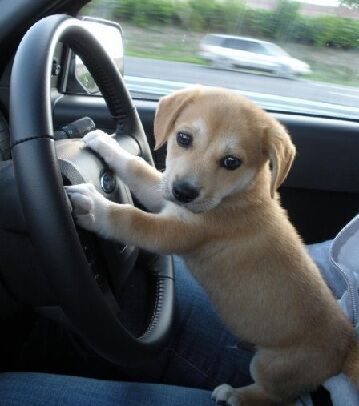
Introducing your puppy to car rides can be a fun and rewarding experience! Here’s how to make sure it’s a positive one:
1. Start Slow
Let your puppy explore the car while it’s parked. Allow them to sniff around and get familiar with the space.
Use treats and praise to create positive associations with being inside the car.
2. Safety First
Use a secure travel crate, pet seatbelt, or dog car harness to keep your puppy safe.
Avoid letting them roam freely—it’s dangerous for both you and your pup.
3. Short and Sweet Trips
Begin with short rides, like around the block or to a nearby park.
Gradually increase the length of the rides as your puppy gets comfortable.
4. Make It Fun
Pair car rides with exciting destinations, like a park or a playdate, so your puppy associates the car with fun.
Bring along their favorite toy or blanket to make the car feel familiar.
5. Avoid Motion Sickness
Puppies can get car sick. Avoid feeding them a big meal right before a ride.
If motion sickness persists, talk to your vet for advice or safe remedies.
6. Stay Calm
Speak to your puppy in a calm and reassuring voice.
Avoid getting frustrated if they seem nervous; patience is key.
7. Regular Practice
Make car rides a part of your puppy’s routine early on, even if you’re just going for a quick errand.
With time and consistency, your puppy will grow to love car rides, making every trip an adventure you can enjoy together!
#PuppyTraining#DogTravel#CarRidesWithDogs#PetParenting#HappyPuppy#PuppyTips#SafeTravelForDogs#DogCareTips#LifeWithDogs
3 notes
·
View notes
Text
Daily Cuteness: Dog Fashionistas















#dailycuteness#cutedogs#funnydogs#DogFashionistas#DogsInClothes#DailyDogFashion#StylishDogs#ChicPups#DogOOTD#PetStyleGoals#CuteDogsInOutfits#TrendyPets#AdorableDogLooks#DoggyFashionShow#PawsomeStyle#FashionForwardDogs#PetClothingIdeas#DogsOfTumblr
3 notes
·
View notes
Text
Daily Cuteness: Pomsky






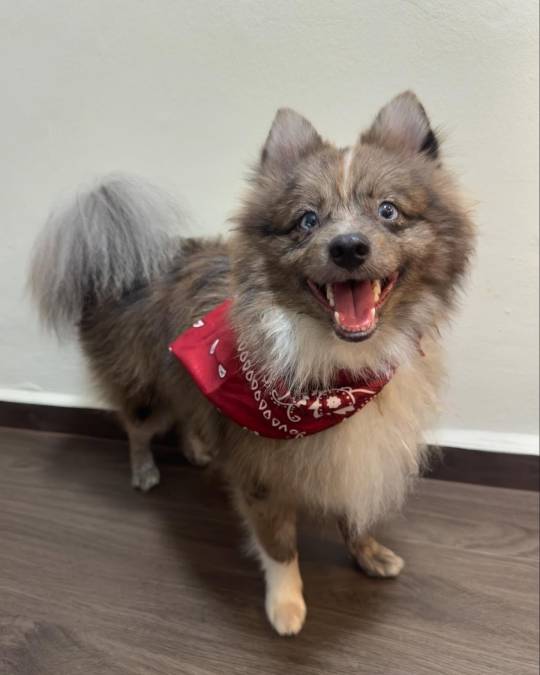






5 notes
·
View notes
Text
How to Stop Your Puppy from Biting: Simple Tips for a Happier, Bite-Free Life!

So, your new puppy is a bundle of joy… with razor-sharp teeth! Biting is totally normal for puppies—it’s how they explore the world. But when those playful nips turn into painful chomps, it’s time to step in. Here's how to guide your puppy away from biting, with love and patience.
1. Why Do Puppies Bite?
Puppies bite for several reasons:
Teething: Their gums are sore, and biting brings relief.
Exploration: Puppies use their mouths to investigate new things.
Play: Biting is how they interact with their littermates, and they don’t know human skin isn’t as tough!
Understanding the "why" helps you respond effectively.
2. Redirect, Don’t Punish
When your puppy starts to bite:
Offer a Toy: Keep chew toys handy. Swap your hand for a safe, puppy-friendly toy like a teething ring or plush toy.
Praise the Right Behavior: When your puppy chews the toy instead of you, shower them with praise and treats.
Punishment can confuse puppies and damage your bond. Positive reinforcement works wonders!
3. Teach Bite Inhibition
Puppies learn bite strength from their littermates. If they bite too hard, their siblings yelp, and the game stops. Mimic this by:
Yelping or Saying “Ouch!” When your puppy bites, let out a sharp “Ouch!” and stop play immediately.
Pause, Then Restart: Give your puppy a moment to calm down before resuming play.
This teaches them that biting too hard makes the fun stop.

4. Don’t Reward Biting
If your puppy bites during play or petting:
Stop Interaction: Calmly withdraw attention. Stand up, cross your arms, and turn away.
Avoid Yanking Your Hand: This can trigger their chase instinct. Stay still until they release.
Consistency is key—don’t let biting earn them attention!
5. Help Them Through Teething
Teething is uncomfortable for puppies. Give them safe ways to soothe their gums:
Frozen Treats: Freeze a wet washcloth or give a frozen carrot.
Special Chews: Offer teething toys made for puppies.
A happy puppy with a cool chew is less likely to gnaw on you.
6. Teach “Leave It”
Teaching commands like “Leave it” or “No bite” gives you control in high-energy moments.
Use Treats as Lures: Hold a treat in your fist and say “Leave it.” Wait for your puppy to stop pawing or nipping, then reward them.
Practice Daily: Reinforce this skill often—it’s a game-changer!
7. Stay Calm and Patient
It’s easy to get frustrated, but remember: puppies are babies!
Be Consistent: Mixed messages confuse your puppy. Set clear boundaries and stick to them.
Celebrate Progress: Every small victory is a step closer to a well-behaved adult dog.

8. Seek Help if Needed
If biting persists or escalates, consider:
Puppy Classes: Group training can teach essential skills and socialization.
Professional Trainers: They can address specific behavior challenges.
There’s no shame in asking for help—it’s all part of raising a great pup.
Final Thoughts The biting phase won’t last forever, especially if you guide your puppy with patience and consistency. Your pup is learning how to navigate the world, and with your help, they’ll grow into a gentle, loving companion.
#PuppyBitingTips#DogTraining101#NewPuppy#StopPuppyBiting#PuppyTeething#DogOwnerLife#TrainingYourDog#HappyPuppyLife
3 notes
·
View notes